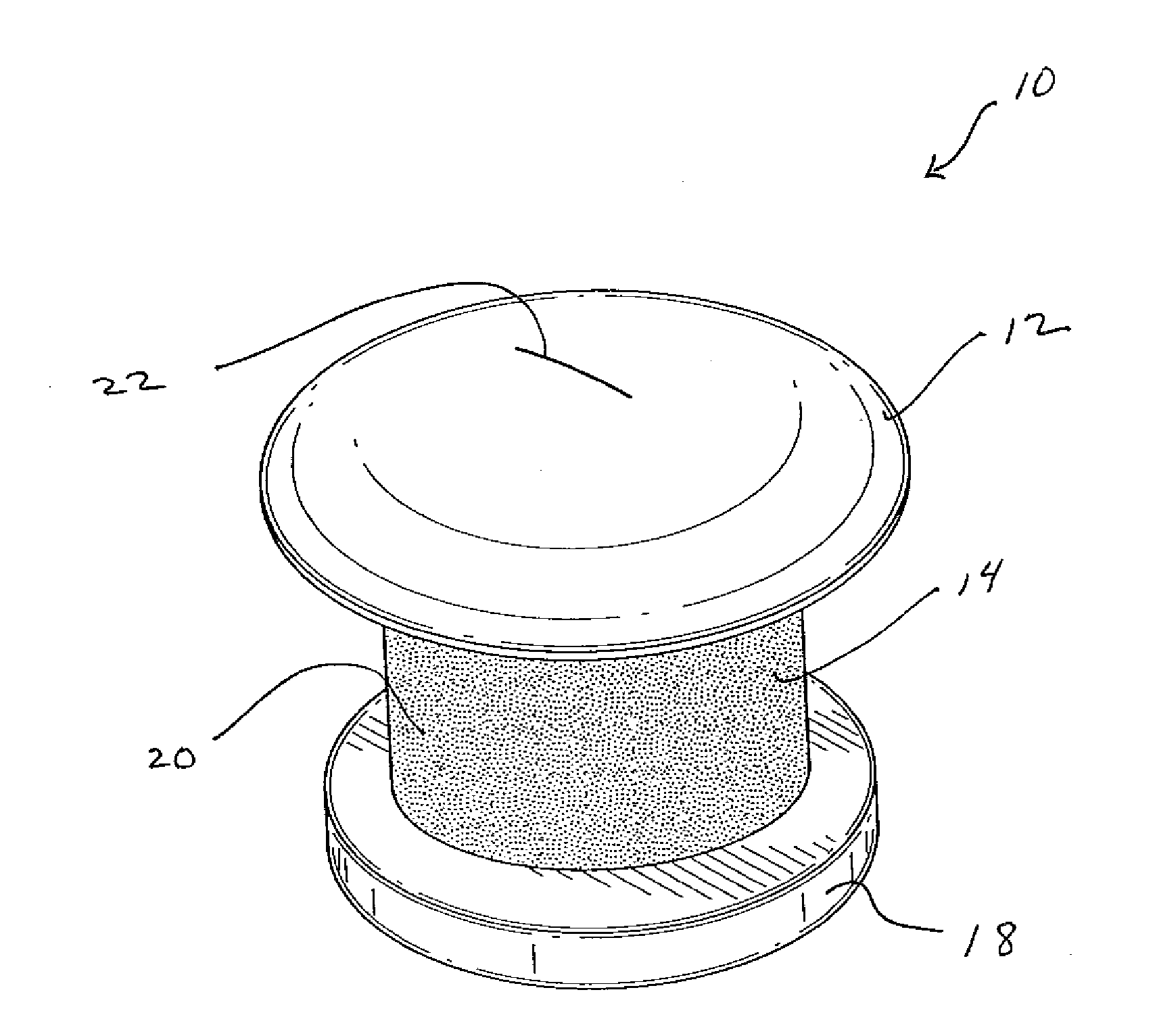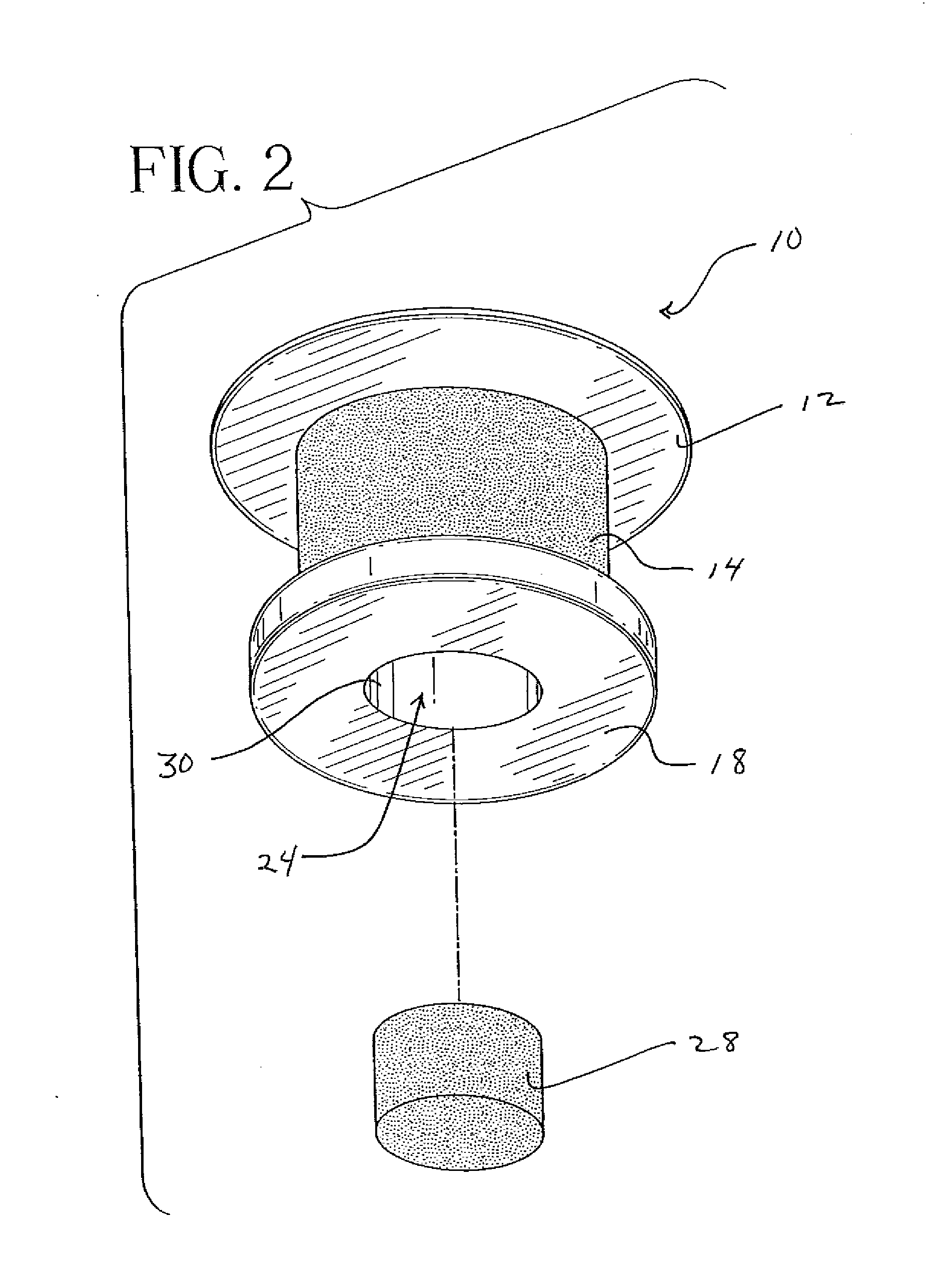Systems and Methods for Reducing Intraocular Pressure
a technology of intraocular pressure and systemic pressure, applied in the field of systems and methods for reducing intraocular pressure, can solve the problems of increased intraocular pressure, obstruction of drainage system, blindness if not properly treated, etc., and achieve the effect of preventing cellular adhesion and reducing scarring over the devi
- Summary
- Abstract
- Description
- Claims
- Application Information
AI Technical Summary
Benefits of technology
Problems solved by technology
Method used
Image
Examples
Embodiment Construction
[0026]With reference to FIG. 1, a perspective view of a shunt 10 according to the present invention may be seen. In a representative embodiment, the shunt 10 may be approximately one millimeter long with an outer diameter of approximately 0.5 mm. While the shunt 10 illustrated in this and the following figures is shown as a cylindrical structure, it is understood that other shapes of tubular conduits may be suitable as well. For example, the shunt 10 may assume a more oval shape or a more lenticular shape. FIG. 1 shows the shunt 10 from its top or external aspect. The shunt 10 dimensionally adapted for transcorneal positioning. The head 12 will be located on the external or epithelial surface of the cornea when the shunt 10 is in position. As shown in this figure, the head 12 may be dome-shaped to provide a continuous transition surface from the device to the cornea. This shape may also be well tolerated by the patient's eyelid. While this shape seems particularly advantageous, othe...
PUM
 Login to View More
Login to View More Abstract
Description
Claims
Application Information
 Login to View More
Login to View More - R&D
- Intellectual Property
- Life Sciences
- Materials
- Tech Scout
- Unparalleled Data Quality
- Higher Quality Content
- 60% Fewer Hallucinations
Browse by: Latest US Patents, China's latest patents, Technical Efficacy Thesaurus, Application Domain, Technology Topic, Popular Technical Reports.
© 2025 PatSnap. All rights reserved.Legal|Privacy policy|Modern Slavery Act Transparency Statement|Sitemap|About US| Contact US: help@patsnap.com



